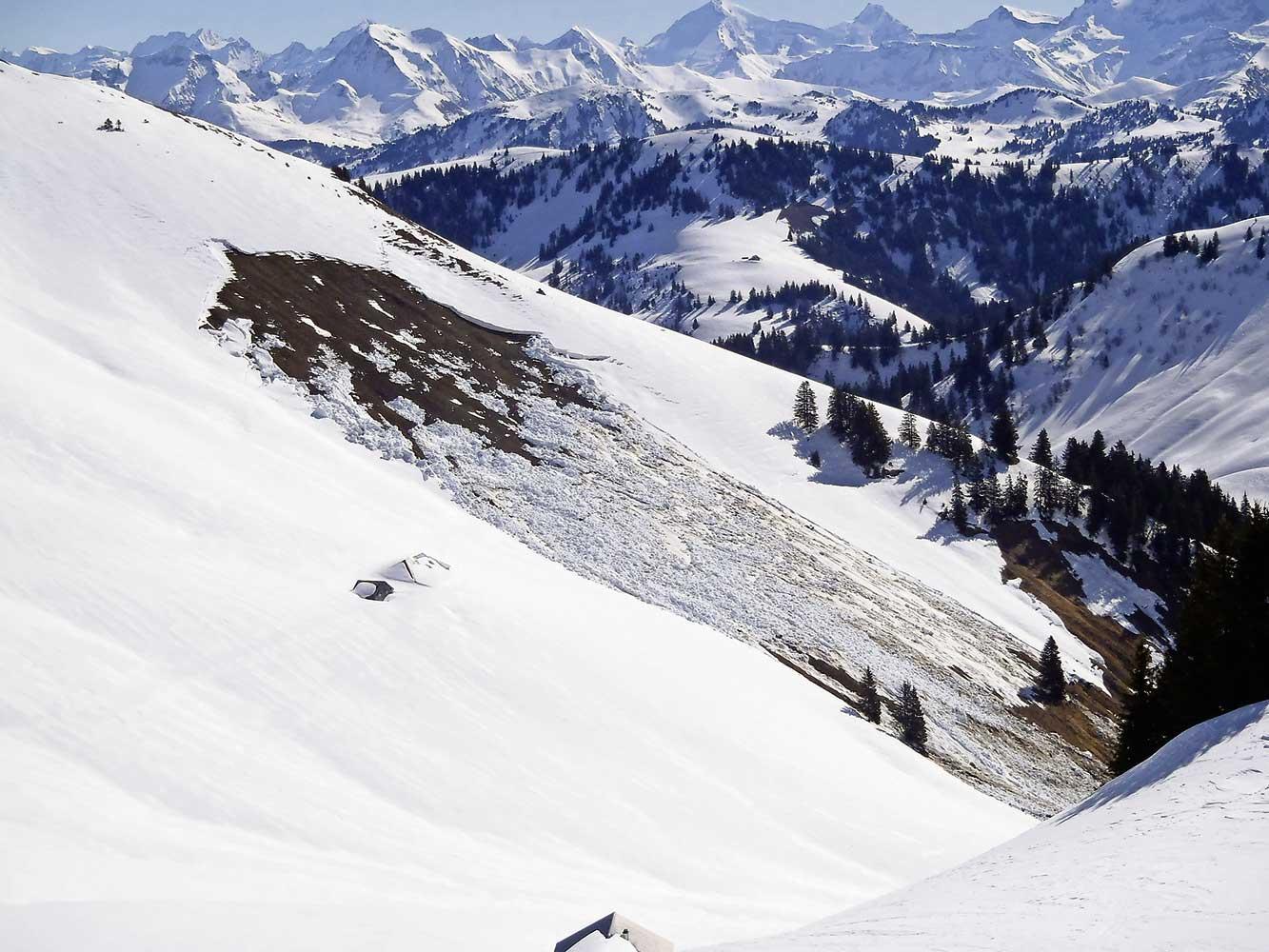Guises of the white gold
28.02.2018 Sports & LeisureThe big picture…
Someone who must know is Ueli Grundisch. He is chief of mountain rescue SAC (Swiss Alpine Club), natural hazard and avalanche consultant of the municipality of Saanen, and observer of the SLF (Institute for Snow and Avalanche Research). For twenty years he has been at the helm of the rescue team in the region and knows every nook in every valley. And he knows about snow.
Many will have guessed that it is not as simple as measuring the snowpack to say if there is an imminent danger of avalanches in a region. But most won’t guess just how complex this science really is.
To understand what happened in January, Grundisch explains with a calm concentration, one first needs to look back to the earliest snow in November, which settled on a ground that had not been frozen. This fact remains vital for every following judgment throughout the winter because the ground then keeps emitting heat and thus keeps changing the snow layers from below.
Second, one needs to consider the changeable weather we had throughout the winter. After a cold and snowy December came a period of intermittent rain and snow and, accordingly, variable temperatures above and below zero. This interplay of precipitation and temperatures resulted in layers of snow with varying physical conditions.
And third, the storms and heavy winds added their share. For one, they create snow drifts of considerable depth. Plus, when snowflakes are tossed around in the air, they lose their hexagonal structure and won’t wedge together anymore as they do in their original shape, which creates further instability in the snow layers.
…and the devil in the detail
Simple enough? Well, these are only three variables without any explanation about how they affect the situation in detail and how they interact. Grundisch readily relativises that the enumeration of these points is a gross simplification and won’t do justice to the complexity of processes and changes that take place on a daily basis. Snow is an ever-changing element and poses new riddles with every fact that has been established about it.
What emerges, though, is the need to keep track of the weather development from the very first snow early in the season to the most recent precipitations. “Mountain guides and tour guides start their preparations at the beginning of the season and continue their evaluation with every snowfall or change of temperature,” he explains. In fact, they keep assessing the situation with every step they take on a tour, looking for indicators, patterns, and signs so they can react if needs be.
Changeability
Grundisch gives a brief assessment of the day’s condition when asked about the situation now and adds: “It keeps changing, though. The snow morphs constantly in every layer, which affects the overall situation.” It’s obvious that no outlook is possible that reaches further than a day or two. Changeability proves to be the only constant and the very key feature of the avalanche situation, a fact that requires curiosity, willingness to learn, and constant alert in Grundisch’s position.
The chief of mountain rescue explains all this in great detail and with much care, always pausing to reflect and to make sure his vis-à-vis can follow the technical explanations. He radiates a calmness that he has acquired with experience, a serenity that complements the vivid gleam of his eyes.
A lot of pressure from the public rests on his shoulders. He is expected to take quick actions when an emergency call comes in but he also has his team to look after. When he became head of rescue twenty years ago, the external pressure affected him much more than it does today. He has learnt to stay focused on the rescue conditions. The safety of his team always comes first.
While he learned to cope with the danger and the pressure, one emotion still often emerges. It’s a grudge that at times verges on anger against the very people he is rescuing because every incident creates a risk for others as well, in particular for his team. But he strikes a more conciliatory tone at the end. Being a mountaineer himself, he is the first to understand why people seek the solitude, the thrill, or just nature untouched.
Markus Iseli




